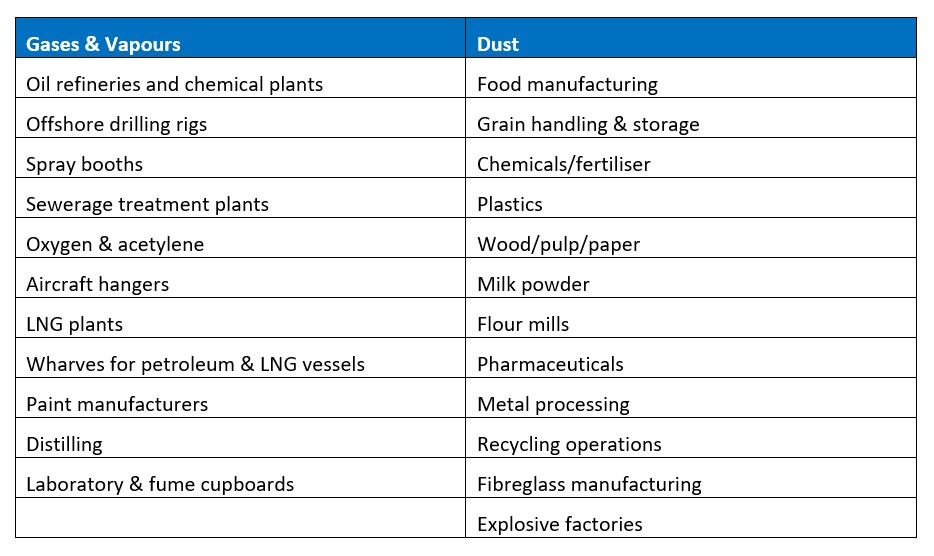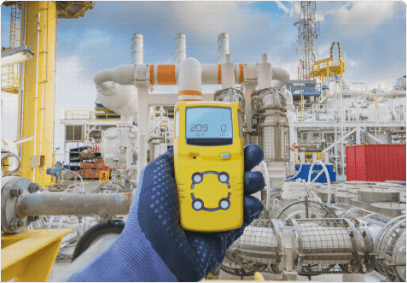Facts About Roar Solutions Uncovered
Facts About Roar Solutions Uncovered
Blog Article
The smart Trick of Roar Solutions That Nobody is Discussing
Table of ContentsNot known Incorrect Statements About Roar Solutions The Single Strategy To Use For Roar Solutions7 Simple Techniques For Roar Solutions
In order to safeguard installations from a possible surge a technique of analysing and identifying a possibly dangerous location is called for. The function of this is to make sure the appropriate selection and setup of equipment to inevitably prevent an explosion and to make certain security of life.
(https://www.magcloud.com/user/roarsolutions)
No devices needs to be installed where the surface temperature of the devices is higher than the ignition temperature level of the given hazard. Below are some common dust dangerous and their minimum ignition temperature. Coal Dust 380C 225C Polythene 420C (thaws) Methyl Cellulose 420C 320C Starch 460C 435C Flour 490C 340C Sugar 490C 460C Grain Dirt 510C 300C Phenolic Resin 530C > 450C Aluminium 590C > 450C PVC 700C > 450C Soot 810C 570C The possibility of the risk being present in a concentration high enough to cause an ignition will certainly differ from area to area.
Hazardous area electrical equipment possibly developed for use in higher ambient temperature levels. Field Repair Service By Authorised Worker: Challenging screening might not be needed nevertheless details treatments may need to be complied with in order for the equipment to maintain its 3rd event ranking. Each item of devices with an unsafe ranking must be examined separately.
Getting My Roar Solutions To Work
The devices register is a thorough data source of devices records that includes a minimum set of fields to determine each thing's place, technological parameters, Ex-spouse category, age, and environmental data. The proportion of Thorough to Shut assessments will be figured out by the Equipment Risk, which is analyzed based on ignition danger (the probability of a resource of ignition versus the likelihood of a flammable ambience )and the unsafe area category
( Zone 0Area 1, or 2). Executing a robust Risk-Based Assessment( RBI )strategy is vital for ensuring conformity and safety and security in handling Electric Tools in Hazardous Locations( EEHA).
Get This Report on Roar Solutions

In regards to eruptive risk, a dangerous area is a setting in which an eruptive environment is existing (or may be expected to be existing) in amounts that need special precautions for the building, installation and usage of devices. eeha courses. In this post we discover the difficulties encountered in the office, the danger control measures, and the required competencies to function safely
It issues of modern-day life that we manufacture, keep or handle a variety of gases or fluids that are deemed combustible, and a series of link dirts that are deemed combustible. These materials can, in certain problems, create explosive environments and these can have significant and awful consequences. Many of us recognize with the fire triangle remove any type of one of the 3 elements and the fire can not happen, but what does this mean in the context of unsafe areas? When breaking this down right into its most basic terms it is basically: a mix of a particular amount of release or leak of a specific substance or material, mixing with ambient oxygen, and the existence of a resource of ignition.
In many circumstances, we can do little about the levels of oxygen airborne, but we can have considerable influence on sources of ignition, for instance electrical devices. Dangerous areas are documented on the dangerous area classification drawing and are determined on-site by the triangular "EX LOVER" sign. Here, amongst other key info, areas are split right into three kinds depending on the hazard, the possibility and duration that an eruptive ambience will certainly exist; Area 0 or 20 is considered the most dangerous and Zone 2 or 22 is deemed the least.
Report this page